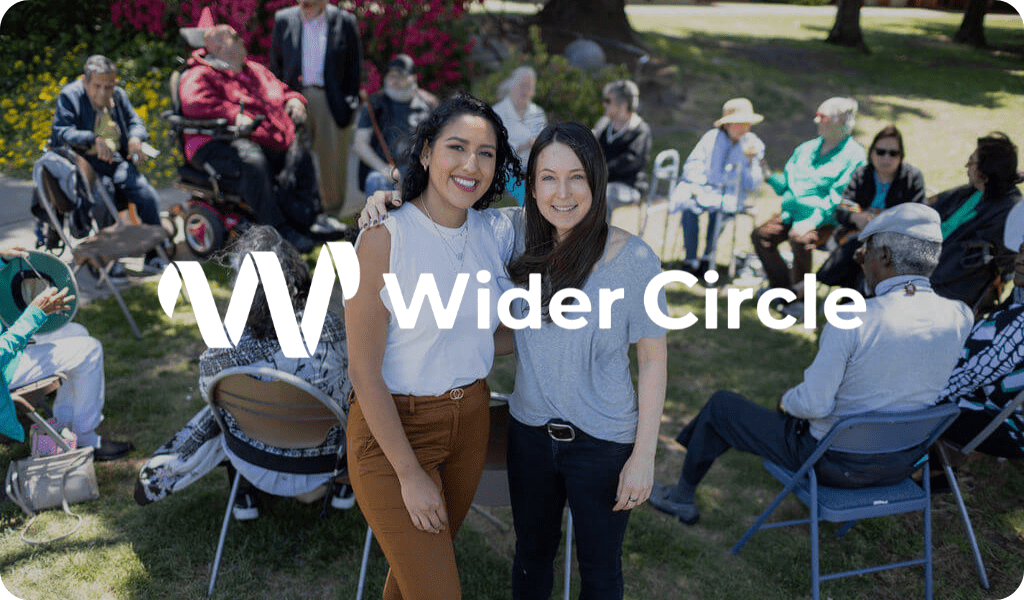The first days on a new job can make or break a new hire’s experience. A clunky, overwhelming employee onboarding process will lead to confusion and disengagement. On the other hand, an engaging one sets the stage for your employee’s (and business’) success.
The good news? With the right strategies at hand, it’s possible to simplify employee onboarding and help new employees feel confident from day one.
What is employee onboarding?
Employee onboarding (or induction or orientation training) is the best way to get your new hires to become productive as soon as possible. Train new employees in their first few days and weeks to assist them in understanding your organization’s expectations and processes.
In fact, 67% of Gen Zs claim that onboarding has made them feel welcomed and valued in their new company.
Onboarding aims to allow new hires to discover your business processes. At the same time, new employees can better focus on their new roles and responsibilities during the induction program.
By building a strong foundation for your new hires and training them on your company’s values, culture, and core responsibilities, you create an effective onboarding experience. A strategic approach boosts job satisfaction, productivity, engagement, and performance—and most importantly, employee retention.
What’s the importance of onboarding employees?
Effective onboarding is critical for any business, no matter the size or industry. A well-structured process helps new employees integrate seamlessly into your organization while preventing low productivity, decreased employee engagement, and increased turnover.
Enhanced productivity
Through employee onboarding, you provide new hires with the knowledge, employee training, and support they need to become productive team members. As they have all they need in their hands to kickstart their new roles, they become more confident to roll up their sleeves and dig into their day-to-day tasks productively.
Deeper engagement
With onboarding, your new hires can acclimate and engage better with your organization. Your people have the opportunity to familiarize themselves with the organization’s expectations and resources. By supporting your new employees in their onboarding journey, you help them become vital contributors to your company’s success. They can engage with your culture, better connect with other team members and leaders, and get to grips with their new roles.
Higher retention rates
New hires who understand your organization inside and out adapt faster. When employees feel comfortable, they’re more productive, engaged, and committed to your company’s goals. And those who feel ‘at home’ from day one are more likely to stay long-term.
What should an employee onboarding process include?
A great employee onboarding process and experience includes clear communication, engaging training, and ongoing support. It should introduce new hires to your company culture, define their roles, and provide the resources they need to thrive.
With the right approach, your employee onboarding process becomes a seamless process that boosts confidence, engagement, and long-term retention. Let’s break down the key elements of an effective and solid employee onboarding process.
Pre-boarding
Set new hires up for success before they even step through the door. Provide welcome information, necessary new hire paperwork, and key company details to help them feel prepared and confident for their first day.
How to implement pre-boarding in your employee onboarding process effectively:
- Send a welcome email with company details, expectations, and key contacts.
- Provide early access to your employee onboarding software for pre-reading materials, intro videos, and FAQs.
- Assign an onboarding buddy or mentor to introduce them to company culture.
- Ensure new hire paperwork is digitally completed in advance to save time on day 1.
Orientation and introduction
A well-structured employee orientation eliminates confusion and makes employees feel valued and included from the start. The first few days should focus on:
- Welcoming new hires: A manager’s personalized greeting and team introductions set the tone.
- Providing essential resources: Give access to company policies, an employee handbook, and an LMS for onboarding courses.
- Virtual or in-person tour: Ensure employees understand office layouts or virtual work environments.
Pro tip: Make the first day interactive by including a fun “get-to-know-you” session, icebreaker activities, or a CEO welcome video.
Paperwork completion
Ensure a smooth transition by streamlining administrative tasks. Use an LMS or HR software to help employees sign documents, complete required forms, and set up benefits without delays.
Company culture orientation
Help new hires understand your mission, vision, values, and company policies. A strong culture fosters engagement and retention, ensuring employees feel connected and motivated from day one.
How to integrate culture into your employee onboarding process:
- Highlight the company’s mission, values, and leadership vision.
- Encourage participation in company events or social initiatives.
- Use storytelling to share company success stories.
Clear communication of roles and responsibilities
New hires should have a clear understanding of their role, expectations, and how they fit into the broader team. A structured onboarding process outlines their responsibilities, reducing confusion and helping them become productive more quickly.
How to ensure clarity:
- Provide a detailed job roadmap outlining responsibilities, milestones, and KPIs.
- Schedule 1:1 meetings with managers to discuss priorities and expectations.
- Use LMS modules to train new hires on workflows, reporting structures, and team collaboration tools.
- Share real-world examples of success stories in similar roles.
Job-specific training
Provide in-depth training on job roles, tools, and procedures. Use your LMS to offer learning paths, ensuring employees receive relevant training tailored to their position.
Key training areas to include:
- Technical skills: Role-based courses on tools, software, and workflows.
- Compliance training: Cybersecurity, workplace safety, and company policies.
- Soft skills training: Communication, teamwork, and time management modules.
- Simulated exercises: Hands-on training through case studies, quizzes, or gamified learning.
Mentor assignment
Pair new hires with an experienced colleague who can provide guidance, answer questions, and offer support. Mentors help employees integrate into the team faster and build confidence in their new role.
How to create an effective mentorship program:
- Match mentors based on role, interests, and career goals.
- Provide mentors with guidelines on how to support new hires.
- Encourage weekly check-ins for the first 90 days.
- Leverage your LMS to create mentor-mentee discussion forums.
Team introductions
Facilitate introductions with different teams and departments to help new hires understand cross-functional collaboration and how their role fits within the company.
How to create meaningful team interactions:
- Organize meet-and-greet sessions with different teams.
- Set up a collaborative project where the new hire can contribute early.
- Use an LMS for team structure breakdowns and role explanations.
System access and setup
Provide access to necessary software, tools, and platforms. Ensure employees have logins, permissions, and technical support to avoid delays in productivity.
How to optimize IT onboarding:
- Provide a step-by-step IT checklist for new hires.
- Schedule a tech orientation call to resolve setup issues.
- Offer self-paced tutorials for company tools via an LMS.
Support and guidance
Your onboarding program doesn’t stop after the first week. Offer ongoing support through coaching, 1:1 check-ins, peer discussions, and training software. Make resources easily accessible and encourage open communication.
Regular check-ins
Schedule touchpoints with managers to review progress, address concerns, and provide feedback. This ensures employees feel supported and have opportunities to ask questions or clarify expectations.
Best practices for effective check-ins:
- Schedule structured 30-60-90-day performance reviews.
- Ask for feedback on the onboarding experience.
- Use surveys and reports in your LMS to identify gaps in training.
Performance expectations & feedback loop
Onboarding isn’t just about training—it’s also about aligning expectations and measuring success.
How to create a strong feedback loop:
- Use LMS surveys and assessments to track knowledge retention.
- Provide constructive feedback early to address concerns.
- Offer career growth insights to keep employees motivated.
Best practices and tips for employee onboarding
While an onboarding process outlines the steps new hires go through—from pre-boarding to training and integration—best practices focus on how to optimize those steps for a smooth and engaging experience.
But the goal is to ensure your onboarding program is effective, engaging, and tailored to the needs of new employees. Here are some employee onboarding best practices to guide you towards success:
1. Prioritize engagement over information overload
Many onboarding programs overwhelm new hires with excessive paperwork and training in the first few days. But a structured yet paced approach prevents burnout and increases knowledge retention.
- Spread out training over several weeks rather than cramming everything into the first few days.
- Mix learning formats (videos, interactive courses, live Q&A) to maintain engagement.
- Focus on essential information first, gradually introducing more complex topics.
2. Personalize the employee onboarding experience
Every new hire has different learning preferences and career background. A personalized and positive onboarding experience enhances employee confidence and effectiveness in their new role.
- Provide role-specific training tailored to each new hire’s department and job function.
- Offer self-paced learning modules for employees who prefer flexibility.
- Adapt onboarding based on employee feedback and progress tracking.
3. Ensure continuous support beyond the first month
Many companies focus heavily on onboarding for the first week but fail to provide long-term support. Onboarding should be viewed as a long-term process, not just a single event.
- Establish a structured check-in system with managers.
- Assign a mentor or buddy to provide ongoing guidance.
- Offer follow-up training as employees settle into their roles.
4. Leverage technology
Technology can streamline administrative tasks and enhance the onboarding experience. A tech-driven onboarding process saves time and ensures consistency.
Best practices include:
- Using an LMS to provide structured learning paths and track new employee progress.
- Integrating onboarding software with HRIS to automate document completion and benefits enrollment.
- Offering a self-paced onboarding experience for remote or hybrid employees.
5. Involve leadership in the onboarding process
When executives and managers actively participate in onboarding, employees feel more valued and connected. Leadership involvement makes new hires feel like an integral part of the company from the start.
- Have senior leaders personally welcome new hires through video messages or live sessions.
- Encourage managers to set up one-on-one meetings with new employees in their first week.
- Provide leadership-led training sessions to discuss company goals and expectations.
Employee onboarding checklist and templates for new hires
A structured onboarding process ensures each new employee has the tools, knowledge, and support needed to transition smoothly into their roles. To streamline this experience, checklists, and templates can help HR teams create a consistent and efficient onboarding journey.
Below is an overview of essential onboarding resources and where to access them.
New hire onboarding checklist
An onboarding checklist serves as a step-by-step guide for HR professionals, ensuring no critical steps are missed during the process. A well-structured checklist typically includes:
- Pre-boarding tasks: Sending a welcome email, collecting necessary paperwork, setting up IT access, and providing essential company information.
- First-day activities: Conducting introductions, providing a virtual or office tour, and reviewing job expectations and responsibilities.
- Training and development: Enrolling new hires in company-wide and job-specific training, introducing them to the learning management system (LMS), and assigning mentors or buddies.
- Performance and engagement check-ins: Scheduling 30-, 60-, and 90-day reviews, gathering feedback on the onboarding experience, and identifying any areas for improvement.
A structured checklist helps HR professionals maintain consistency and ensures new employees feel supported at every stage.
Onboarding kit for new employees
An onboarding kit provides new hires with all the resources they need to familiarize themselves with the company, their role, and workplace expectations. A comprehensive onboarding kit may include:
- Company handbook: An overview of your organization’s culture, mission, values, policies, and organizational structure.
- Role-specific guides: A breakdown of job responsibilities, team workflows, and key performance expectations.
- Training materials: Access to compliance training, job-specific courses, and learning resources through the company’s LMS.
- HR forms and benefits information: Documents related to payroll, benefits, time-off policies, and workplace procedures.
Onboarding email templates
The onboarding journey starts before day one. And a well-crafted onboarding email can make all the difference. Sending an engaging, informative welcome email helps new hires feel excited and prepared.
A great onboarding email should include:
- A warm welcome message from HR or their direct manager.
- Key first-day details: What time to start, where to go (or how to log in), and what to expect.
- Pre-boarding tasks: Links to paperwork, IT setup, or company introduction materials.
- Helpful resources: A guide to the company, an employee handbook, or an introductory video.
- A point of contact: Someone they can reach out to with questions before their start date.
What’s beyond onboarding?
Onboarding a new employee is a crucial step in welcoming a prospective employee. However, it’s only one part of a broader workforce management strategy.
To build a truly seamless employee experience, organizations must also focus on employee preboarding, crossboarding, and offboarding. These three processes play a significant role in engagement, retention, and long-term workforce planning. Also, organizations can create a more holistic employee experience—one that starts before day one, evolves with career growth, and extends even after an employee leaves.
Each of these transitions represents a critical moment in an employee’s journey, influencing how they perceive the company and their role within it. Companies that invest in these stages not only enhance employee satisfaction but also strengthen their employer brand.
Preboarding: Setting the stage for a successful start
The time between signing a job offer and the first official day is often overlooked, yet it’s a crucial period for setting each new employee up for success. A strong preboarding process helps employees feel welcomed, informed, and engaged before they even walk through the door—whether that door is physical or virtual.
A structured preboarding experience can significantly reduce first-day anxiety, making employees feel more confident and prepared. It also boosts early engagement, as new team members feel a sense of belonging before they even start working.
Crossboarding: Supporting internal career growth
While much attention is given to every new employee, existing employees also undergo transitions within the company.
Crossboarding is the process of onboarding employees into new roles, departments, or leadership positions within the same organization. Unlike traditional onboarding, crossboarding acknowledges the employee’s existing knowledge while equipping them with the skills and insights needed for their new responsibilities.
A strong crossboarding process promotes career growth, increases employee loyalty, and reduces recruitment costs by enabling internal mobility.
Offboarding: Leaving on a positive note
Employee departures, whether voluntary or involuntary, can impact team morale, productivity, and company reputation. A structured offboarding process ensures that employees leave on good terms, preserving professional relationships and maintaining a strong employer brand.
Employees who have a positive exit experience are more likely to speak highly of the company, refer potential hires, and even return as boomerang employees in the future. Offboarding also plays a role in knowledge retention, ensuring that critical information isn’t lost when an employee leaves.
Benefits of using onboarding training software
Onboarding sets the stage for employee success. But without the right tools, it can be chaotic and time-consuming.
Your onboarding training LMS simplifies the process by centralizing training, personalizing learning, and ensuring every new employee gets the right information when they need it. With features like HRIS integration, tracking, and mobile access, onboarding software makes training seamless, efficient, and engaging.
Let’s dive into the benefits.
Centralized training platform
Your LMS is the best centralized way of managing your eLearning materials. It allows you to store all your training content in one place, as well as control it. A centralized learning platform enables you to create courses and access information right at the time you need it, whenever you need it, without resorting to outdated and costly management and storage solutions or risking losing any sensitive data.
Learning paths
Not everyone learns the same way or at the same pace or place. Make room for learning and training flexibility in your employee onboarding strategy by investing in an LMS or employee onboarding software that provides learning paths for every new employee. Employees can better engage in training, and you ensure learning adapts to your people’s needs anytime it’s necessary.
Plus, it’s easier than ever to create courses according to your new employee needs with an AI course creator.

Online training modules
With hybrid and remote work being at the top of workplace trends, online training is essential. An LMS can provide efficient and effective onboarding training for your remote new hires without risking their seamless integration into your organization. Online discussion boards, built-in videoconferencing tools, gamification, and course libraries can all optimize your online training modules and make onboarding an unforgettable experience for new employees.
Also, an LMS can help you reach remote employees wherever they are. Hybrid and remote work environments can enjoy onboard training that takes place anytime, anywhere.
Integration with HRIS
Connect your HRIS with your LMS and keep all your new hire information and training in one place. An HRIS integration in your LMS allows you to sync data, track training progress, and train your employees through the onboarding process without constantly having to switch between tools.
HRIS tools, such as, TalentHR and BambooHR, can be integrated into your TalentLMS account to help automate and streamline onboarding.

Tracking and reporting
How can you be sure your formal onboarding program is effective? How do you track new hire participation and training success? With the right LMS at your disposal, you can easily gather valuable onboarding data through default and custom reports and optimize your employee onboarding process wherever needed.
Mobile access
Allow every new employee to learn on the go, wherever and whenever they feel comfortable and focused. An LMS that offers mobile accessibility makes new hire onboarding convenient, as your people can access valuable data and complete training modules from devices they always have with them.
Turning onboarding into your competitive edge
Successful onboarding is your first real chance to show new hires what your company is all about. A smooth, well-designed process gives them the clarity, confidence, and excitement they need to dive into their roles and make an impact fast.
But the experience shouldn’t stop there. Preboarding builds anticipation, crossboarding fuels career growth, and offboarding turns goodbyes into future opportunities. Companies that master these transitions create a workplace where people don’t just work. They thrive.
With the right strategy and tools, like an LMS that keeps training organized and accessible, you can make onboarding more than just a warm welcome. You can turn it into a powerful driver of growth, retention, and organizational culture—one that keeps employees inspired from day one and beyond.
| Tags: employee onboarding





